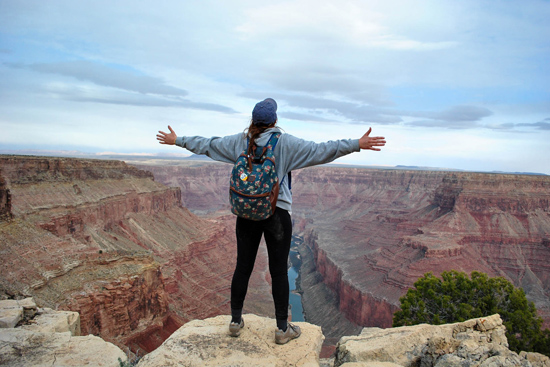Where Coal Still Rules
Part 3: Students explore the tough realities of Harlan County
This spring break, hundreds of Boston University students once again chose to make a difference, volunteering in disaster zones and troubled communities across the country, joining Alternative Spring Breaks trips organized by BU’s Community Service Center.
Last year, BU Today’s Vicky Waltz chaperoned students who reached Dupree, S.D., to work with Native American children at a Sioux YMCA. This year, she revisited her role, in a very different part of the country. This is her third and final contribution from coal country:
The man’s face was so covered in soot that only his sad eyes could be seen. Paul Brown (ENG’11) stood aside as the man reached his huge hand — dry, cracked, and blackened under the fingernails — across the Wal-Mart aisle for a loaf of bread. “It was then that it really hit me — we’re in coal mining country,” recalls Brown.
Brown, with 10 more Boston University student volunteers, traveled to Harlan County, Kentucky, over spring break to work at Cranks Creek Survival Center, a nonprofit organization founded by Becky and Bobby Simpson in 1977. The couple established the center after a series of floods caused by nearby strip mining devastated the small community.
Before coming to Kentucky, many of the volunteers were unaware of coal mining’s impact on this mountainous region. “I had no idea that mining existed in Kentucky,” says Nadia Ouhib (ENG’11). “Then I learned that it affects almost every family here.”
For more than a century, coal has dominated the economy and politics of southeastern Kentucky. It has brought great wealth to a few, taken the lives of thousands, and left countless scars on the land. In the past 100 years, Harlan County has produced more than one billion tons of coal, yet it remains one of the poorest counties in the state.
“The coal mining industry has polluted our water and ruined our mountains,” says retired miner Carl Shoupe, a member of the grassroots community organization Kentuckians for the Commonwealth (KFTC). Shoupe, along with two other KFTC members, described the state’s coal mining legacy to BU volunteers one evening.
“Most of the old-time miners around here were deep miners,” Shoupe says. “That means we entered the mountains through tunnels and shafts, leaving the overlying rock in place.”
Shoupe, a third-generation deep miner, spoke adamantly against the practice of surface mining — strip mining — which requires the removal of 500 to 800 feet of mountaintop elevation. Strip miners, he explains, use dynamite to blast the surface of the mountains, causing “overburden” to tumble down into nearby streams. As of 2001, surface mining had buried more than 1,000 miles of streams in Central Appalachia according to a report released by the Environmental Protection Agency.
“What they’re doing to our mountains — it’s an act against God,” Shoupe says. “Now, I’m proud of my heritage, but darn it, keep the mining underground. Don’t destroy our trees and our mountains and our watershed.”
Before coming to Kentucky, David Tassin (CAS’10) rented Harlan County, USA, a 1976 documentary that detailed the 1973 miners’ strike against the Duke Power Company in Harlan County. “It was interesting to see how much things have changed — and how much they haven’t changed — since the film was made,” says Tassin.
Despite local mining companies’ annual million-dollar profits, more than 30 percent of Harlan County residents live below the poverty level. “Mine workers’ unions no longer have a strong presence in the area, and many of the contracts between coal companies and their miners don’t include paid vacation or sick leave,” Tassin says. “The miners also pay for much of their own health insurance.”
“Just about everyone we met here worked in the mines at one point or another,” says Cristina Yim (CAS’10). “Even our site contact, Bobby Simpson, and he’s blind. It really made me realize how enduring people can be.”
To read part one of this year’s ABS trip series, click here. To read part two, click here.
Read more Alternative Spring Breaks stories.
Vicky Waltz can be reached at vwaltz@bu.edu.
This Series
Also in
Alternative Spring Breaks
-
March 19, 2014
Alternative Spring Breaks: Nashville, Tennessee
-
March 18, 2014
Alternative Spring Breaks: Natchez, Mississippi
-
March 17, 2014
Alternative Spring Breaks: Staten Island, New York

Comments & Discussion
Boston University moderates comments to facilitate an informed, substantive, civil conversation. Abusive, profane, self-promotional, misleading, incoherent or off-topic comments will be rejected. Moderators are staffed during regular business hours (EST) and can only accept comments written in English. Statistics or facts must include a citation or a link to the citation.